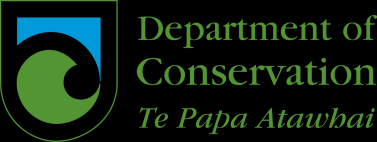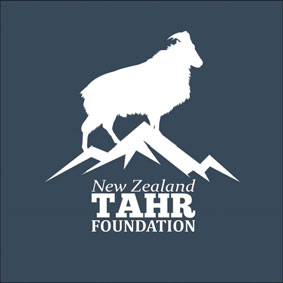
18-E-0697
15 November 2018
[FYI request #8729 email]
Dear Denley
Thank you for your Official Information Act request to the Department of
Conservation, dated 20 September 2018. On 9 October 2018 we extended your
request to 15 November 2018 due to the large quantity of information sought. Your
question regarding the tahr cull and our response, is listed below:
‘correspondence between DOC and NZ Tahr Foundation / NZDA on how estimated
numbers were obtained; recent studies on the habitat’
Please refer to attachment 1 for the above correspondence.
The documents listed below fall within the scope of your request
Item Document description
Decision
1
Report
Released
Impact of Himalayan tahr (Hemitragus jemlahicus) on in full
snow tussocks in the Southern Alps, New Zealand.
Available on DOC website:
https://www.doc.govt.nz/globalassets/documents/conse
rvation/threats-and-impacts/animal-pests/tahr/impact-
of-himalayan-tahr-on-snow-tussocks-southern-alps-
2014.pdf
2
Report
Released
Tahr density estimates from aerial surveys (DOC- in full
3233856).
Available on DOC website:
https://www.doc.govt.nz/globalassets/documents/parks
-and-recreation/hunting/west-coast/tahr-density-
estimates.pdf
3
Data
Released
Tier 1 Tahr Data - 2016
in full
Tahr Data for 2015/2016 field season. Includes Aerial
counts, pellet counts and GPS data.
Available on DOC website:
https://www.doc.govt.nz/globalassets/documents/about
-doc/oia/2018/tier-1-tahr-data-2015-16.xlsx
4
Data
Released

Tier 1 Tahr Data - 2017
in full
Tahr Data for 2016/2017 field season. includes Aerial
counts, pellet counts and GPS data.
Available on DOC website:
https://www.doc.govt.nz/globalassets/documents/about
-doc/oia/2018/tier-1-tahr-data-2016-17.xlsx
I have decided to release the relevant parts of the documents listed above, subject to
information being withheld under one or more of the following sections of the Official
Information Act, as applicable:
• personal contact details of officials, under section 9(2)(a) – to protect the
privacy of natural persons, including deceased people,
• commercially sensitive information, under section 9(2)(b)(ii) – to protect the
commercial position of the person who supplied the information, or who is
the subject of the information,
• advice still under consideration, section 9(2)(f)(iv) – to maintain the current
constitutional conventions protecting the confidentiality of advice tendered by
Ministers and officials,
• advice subject to legal privilege, under section 9(2)(h) - to maintain legal
professional privilege,
In making my decision, I have considered the public interest considerations in
section 9(1) of the Official Information Act.
You are entitled to seek an investigation and review of my decision by writing to an
Ombudsman as provided by section 28(3) of the Official Information Act.
If you wish to discuss this response to your request, please contact Andy Roberts on
phone number 027 280 9186 or by email: [email address]
Yours sincerely
Andy Roberts
Director – Operations, Eastern South Island
Attachment 1.
From:
Sent:
Wednesday, 10 October 2018 3:01 p.m.
To:
Andy Roberts
Subject:
Draft Tahr Ops. Plan
Hi Andy,
RELEASED UNDER THE OFFICIAL
Good to see some progress is being made, however there needs to be a few matters addressed
and tidied up before the plan can be implemented. At our last meeting there was a lot of goodwill
between stakeholders and unfortunately some of the issues we believed to have consensus on,
have not made it into this draft plan. Hopefully we still have time to sort this out and can go
forward in good partnership.
Page 2
There is concern about the 10-day period for reporting by DOC following S&D operations. The
number of additional tahr which could be taken during the period without reporting having
occurred is significant. If the 6000 target is reached then it is expected that DOC will cease all
operations. If there is a 10 day lag in data reporting then this 6000 limit could be significantly
exceeded.
Page 4
Summer ballots are mentioned. As discussed previously the members of the NZ Tahr Foundation
do not support culling tahr at this time. A spring ballot would be more suitable, and the hunting
sector stakeholders have consensus on this point. A spring ballot running from August – mid
November would allow recreational groups to be effective in reducing tahr densities in these
INFORMATION
remote locations.
Reasoning as follows:
Animals are more active in spring, so easier to target.
Female groups are at lower elevations in spring, so easier to target.
During summer cloud cover on the West Coast is a problem for helicopter access and
hunting visibility.
Animal welfare is a further issue during summer we wish to avoid.
Summer is the main climbing / tramping / other recreation season, a spring ballot avoids
conflict with these user groups.
ACT
Page 5
Our Stakeholders recommend No WARO on Tahr in May or June. Currently the draft plan only
excludes May. The Tahr WARO operators support this closure period along with the rest of the NZ
Tahr Foundation. WARO along with tahr control in the exclusion zones during May - June would
be fine. A closure period of 2 months prevents conflict during the Tahr rut, the time of year of
greatest hunting interest to both recreational and the guided hunting sectors.
Page 6
1
AATH offsets should not be conducted in February (the summer period), due to animal welfare
issues. The AATH concessionaires and Helicopter Operators have all indicated they would like to
see all culling and offsets completed in the July – mid November period. Should AATH offsets not
be achieved during the spring April would be the correct time of year to get the additional work
done, as has been previously noted by the GAC.
Overall
NZDA is mentioned regularly alon
RELEASED
gside GAC and TLG. The issue is that the NZDA is only one of
the recreational groups and singling them out throughout the document is inappropriate. The GAC
encompasses the needs of all hunting groups and so only the GAC and TLG should be specified.
This point we raise does not diminish the importance of NZDA, we would just like the department
to acknowledge all stakeholder groups equally.
A few notes regarding the Appendices. Some of these issues already covered.
DOC control should start in July not J
UNDER
une, to prevent conflict during tahr rut.
West coast ballots spring not summer (Aug-mid Nov.)
No WARO in May and June.
Surveys?? avoid during rut when hunters are out, May/June.
Review progress, July would be better as this will include kill returns from the rut
period.
THE
April is not a suitable time of year to hold TLG meetings. This is a busy time of year for
many in the hunting sector. Our representatives have indicated that July would be the
preferable time to hold the TLG meeting.
OFFICIAL
In the principles of the 2018 – 2019 draft control plan the first point listed is (Partnership)
Of great concern to the membership is a lack of partnership up to this point and in this draft plan.
The Game Animal Council recommended 2 helicopter operators based in South Westland, these
operators are the most experienced and trusted to help conduct the up-coming control operations.
INFORMATION
These two operators are also the principle tahr WARO operators so are the best placed operators
to fully utilise the carcasses to prevent wastage. To date the 10th of October these operators have
not been contacted by the department.
Some of the helicopter companies and DOC shooter’s that have done these contracts the last few
years lack the trust of stakeholders. It is widely known that the DOC shooters and companies
used to date have shot bull tahr, chamois and red deer during control operations. If this situation
continues there will be a complete lack of trust and transparency. The draft plan needs to
recognise these past failures and address them before control operations commence. As we
discussed at our previous meeting if the Department wishes to provide the shooter and helicopter,
ACT
then a TLG observer (from within the hunting sector) must be present on all culling operations. If
the department does not like this scenario, then DOC should contract the work to the Helicopter
companies suggested by the GAC and provide the observers. In the opinion of the NZ Tahr
Foundation this seems to be the most suitable option and likely the most cost effective as well. By
using professional pilots and shooters, occupational health and safety issues are also addressed.
It is essential a good partnership can be made between the Department and stakeholders to
ensure transparency, otherwise the stakeholders do not support this draft plan. There should be
no reason observers cannot be used in all S&D operations, as all groups should want trust and
transparency. The sooner we can develop these partnerships the sooner we can all trust each
other.
2

If there are any issues you would like to discuss further, please do not hesitate to give me a call.
We look forward to seeing a draft plan that the department, stakeholders and the Game Animal
Council can all fully endorse. As long as this can be achieved we look can forward to good
partnerships into the future and work towards “
Managing tahr to provide sustainable hunting whilst
conserving alpine vegetation.” Hopefully we are close to ironing out these last few issues that
need tweaked.
Regards
RELEASED
New Zealand Tahr Foundation
UNDER
THE
OFFICIAL
INFORMATION
ACT
3


